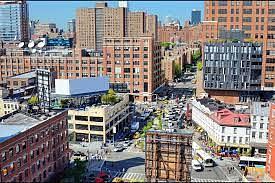Migrant Crisis Shows New York Is Becoming Ungovernable Again
The migrant crisis that began in spring 2022 has restored New York’s reputation as “the ungovernable city.” It has also revived the tradition of mendicant urbanism. Back during the “bad old days,” New York mayors such as David Dinkins reflexively blamed all the city’s problems on inadequate state and federal aid. Current mayor Eric Adams, and other local Democrats, have insisted that New York’s greatest need in responding to the migrants is more funding and other assistance from state and federal government.
That New York is the victim of federal malfeasance is, in crucial respects, indisputable. New York’s homeless-shelter system, which city government has been awkwardly trying to repurpose into a network of refugee centers, is now host to a record-high census. No way would that be so were the southern border less porous.
But the city bears most of the blame. The only cities that have experienced migrant crises anything like New York’s are border cities. The important difference between border cities and New York is that the former are on the border. Only New York, among major cities in the U.S., confers a “right to shelter” on everyone: single adults and families, in all climate conditions, regardless of immigration status. That’s why New York has attracted so many more migrants than other major cities, and why city officials are now contemplating setting up tents in Central Park.
Traditionally, New York homeless advocates refused to acknowledge that the right to shelter incentivized homelessness. The migrant crisis has provided definitive evidence that human beings do, in fact, respond to incentives. Liberal press outlets now regularly concede that New York’s unusually generous shelter policy is at least partly responsible for the crisis’s magnitude.
Mayor Adams has, to his credit, sought relief from the right to shelter. He argues that a policy designed to meet the limited aim of moving unruly substance abusers off city streets is not well suited to handle a global migrant crisis. Advocates, though, will countenance no modification to the right to shelter. Their favorite recommendation is federal work authorization for the “asylum seekers” (that’s the catch-all term favored by the media and local Democrats). Though normally indifferent toward the workforce-participation rate, New York Democrats have, of late, made something of a panacea out of work authorization. Some have crafted grandiose arguments about how New York’s economic future hinges on getting as many migrants into on-the-books jobs as possible. Others have even claimed that the migrants offer city government its best hope for addressing its own workforce shortage. As for how everyone’s going to find an apartment, who knows. Whenever the question of getting the migrants out of shelter and into permanent housing comes up, New York Democrats change the subject back to work as quickly as possible. That tactic was traditionally associated with conservatives in homeless-policy debates.




